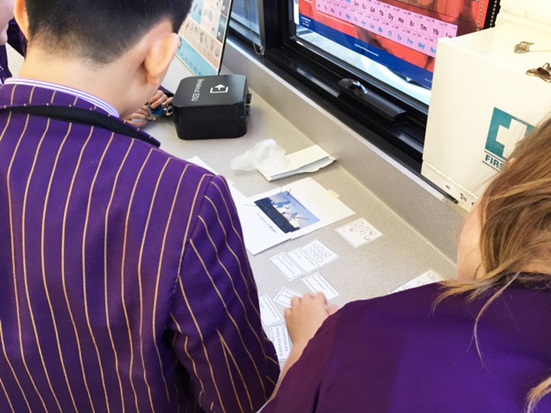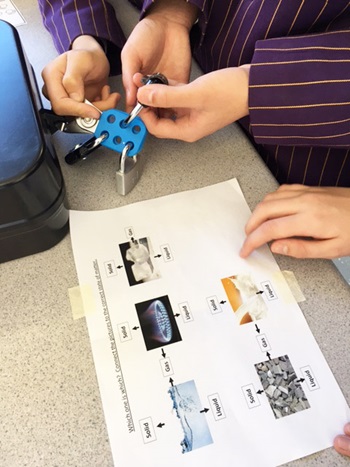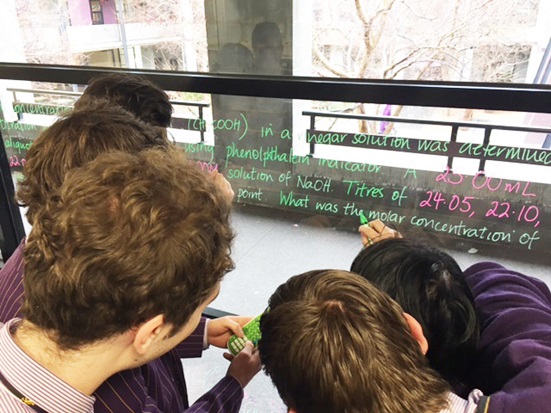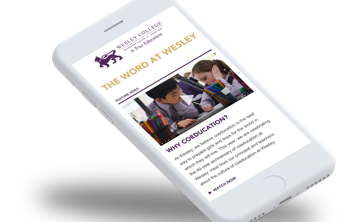
Collaboration is not just something students do while learning; it’s what they do to learn, as Wesley Science teacher Erin Bruns explains. Soft skills, often referred to as core employability skills, have never been more important. It’s no surprise that the top five soft skills employers say will be vital in the workplace in 2020, according to the World Economic Forum’s Future of Jobs Report 2016, are collaboration, complex problem solving, critical thinking, creativity and people management.
Educators generally agree that collaboration is not just about employability; it’s about developing the whole person by learning to know, to do, to live with and to be. And collaboration is not just something students do while learning; it’s what they do to learn.
Even the OECD Programme for International Student Assessment (PISA) is now making use of computer-based assessments of interactive tasks to measure how well students can arrive at a shared understanding of a problem and solution.
Why collaborate?

According to a report by researchers at Pearson and the Partnership for 21st Century Learning, developing knowledge about collaboration and the skill to collaborate is important because:
- people who know more about collaborating go on to enjoy higher performance in team settings
- training students to work together makes collaborative or cooperative learning approaches more productive in terms of actual learning
- strengthening students’ collaboration skills enhance their employment prospects and career advancement, and
- teaching students how to work with others within a community on social issues increases their commitment to civic participation.
In essence, collaborative approaches to teaching and learning help students to develop their ability to communicate with others, resolve conflicts, manage tasks, problem solve and learn.
Research by Emma Mercier Georgia Vourloumi and Steven Higgins on the interactions of 10- to 11‐year‐old students found that students asked to solve mathematical ‘mystery’ problems collaboratively produced more ideas for solving problems when students generated ideas and then responded to each other than when the idea came from their teacher.
Let's get collaborative

The jury, it seems, is in: collaborative approaches in classrooms are vital. But collaboration involves much more than rebadging a teaching and learning program or unit to be completed by a group. The program or unit also has to depend on our students’ ability to communicate with others, resolve conflicts and manage tasks.
I used Breakout EDU kits with Years 7 and 9 students to collaborate in solving science problems. According to Breakout EDU, Breakout EDU kits challenge students to solve a series of challenging puzzles in order to open a locked box, fostering their teamwork and critical thinking. The approach transfers the ownership of learning from teachers to students, making it easy for teachers to observe how students approach problem solving and apply their knowledge. It also provides students with many opportunities to ‘fail forward’.
Students who don’t normally talk or who prefer to work alone really came out of their shell, while others who tend to dominate really listened and engaged with their peers rather than assuming control.
Using the approach with my Year 9s was particularly instructive, since it was the first time I’d taught this combination of students. The Breakout EDU approach not only showed me a little of the students’ personalities and collaborative skills, but also enabled me to quickly assess their scientific understanding.
I used a pre-made set of challenges from the Breakout EDU website so all I needed to do was download the instructions and set-up the different locks and puzzles in the classroom.
This inspired me to create my own bespoke set of challenges for my Year 12 Chemistry students, addressing titration calculations, recognition of carbon structures, pH indicators, equilibrium problems and anagram clues using key terms to really push their understanding.
My bespoke Year 12 Chemistry challenges were specifically focussed on the needs and understanding of my students – and because they had just completed a mock exam the day prior, the Breakout EDU approach was a great way not only to welcome them back to class on Friday but also to consolidate their understanding. The Year 12s worked extremely well together, and students who normally work autonomously interacted and supported others. Since then, these same students are now working together more frequently in class and more willing to share their ideas and understanding.
The good news is that approaches like Breakout EDU not only foster collaboration, but engage students in complex problem solving, critical thinking, creativity and people management.
